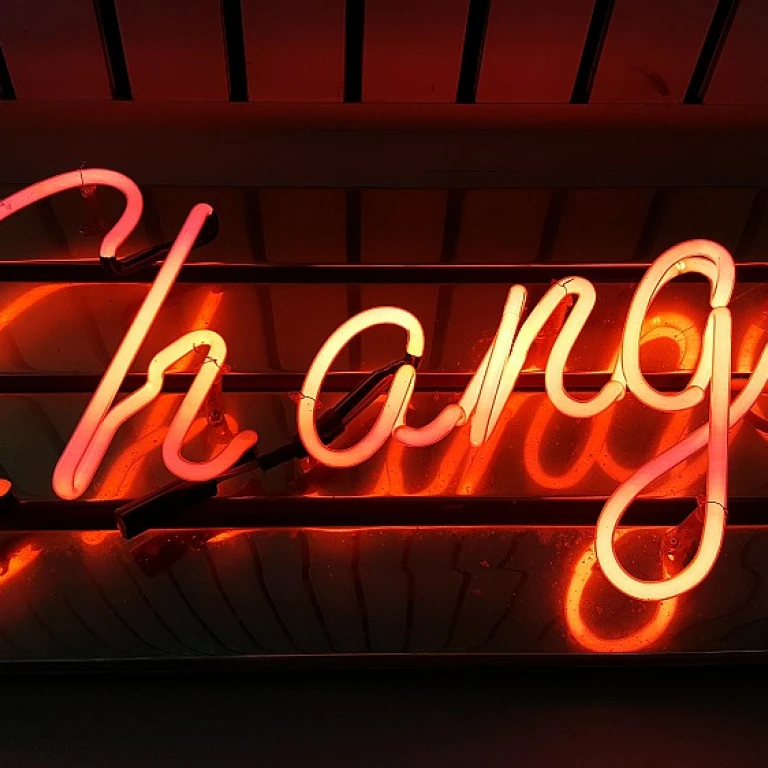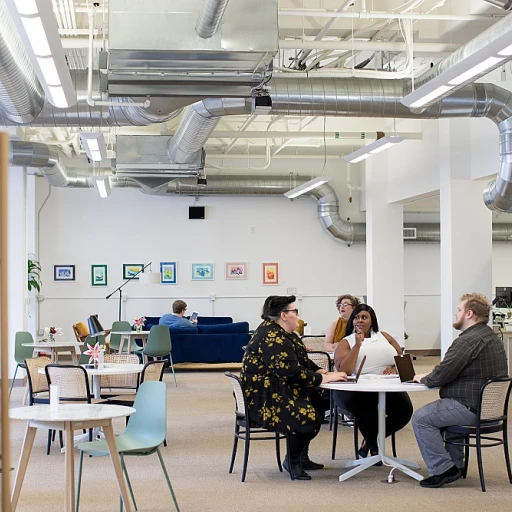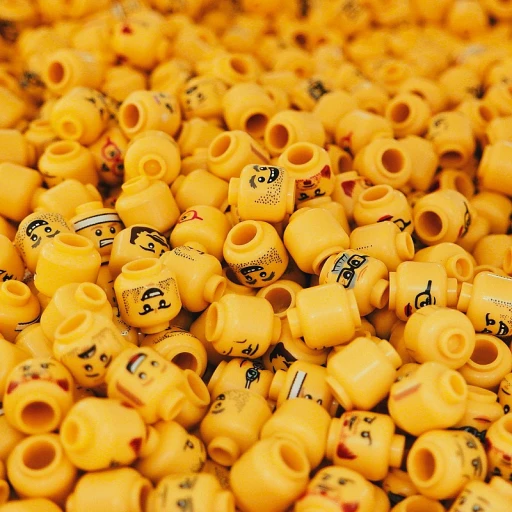
Understanding Artistic Trades
A Closer Look at Artistic Professions
Navigating the world of artistic professions requires understanding the varied and dynamic nature of these trades. Artistic careers often span across diverse fields such as fashion, film, design, and photography, each offering unique opportunities and challenges. Artists, whether they are graphic designers, fashion designers, or makeup artists, find themselves constantly creating and innovating to stay relevant in their industry. One striking aspect of artistic trades is the blend of creativity and technical skill. For instance, graphic designers employ technology to develop visual concepts, while fine artists may specialize in traditional painting methods. The demand for skills that merge artistry with technology is particularly evident in the video game industry, where motion graphics and special effects highlight the need for creative professionals who excel at both design and technical execution. Artistic professions usually revolve around projects that require multitasking and collaboration. An art teacher, for example, must concurrently design lesson plans and manage classroom dynamics, whereas a special effects designer might work as part of a broader team within the film or video production industry. While traditional notions of an 'art career' might lean toward fine arts or sculpture, contemporary art trades also encompass roles in social media marketing and video content creation. Professionals in these areas leverage platforms to showcase their work, tap into global audiences, and cultivate new career opportunities. As the lines between different artistic fields blur, individuals seeking to transition into these careers should focus on recognizing and developing skills that are transferable across disciplines. This approach can lead to new roles within the vast expanse of art careers, from graphic design to motion graphics, and even in the rapidly evolving field of video game design. For those exploring artistic professions, understanding the diverse range and demands of these trades can aid in making informed decisions as you transition within the creative workforce. Explore more about navigating a career shift within creative industries here.Identifying Transferable Skills
Recognizing Your Transferable Skills
Transitioning within the diverse world of art careers—be it from graphic design to motion graphics, or from fine arts to fashion design—requires recognizing and harnessing your transferable skills. While the artistic professions each have unique demands, many skills are universally applicable and provide a solid foundation for a successful move. Your experience in art trades likely comprises a blend of qualities that you might already possess but haven't formally acknowledged. Start by identifying key abilities that align with different art professions, such as:- Creative Problem Solving: Artists and designers excel in innovative thinking. This skill not only underpins design art and fine art careers but also extends to roles like special effects and video game design, where creativity is entwined with technical proficiency.
- Communication: From conveying ideas visually to articulating concepts verbally, effective communication is core to almost every art career. Graphic designers, makeup artists, and art teachers rely heavily on this ability to translate vision into action.
- Attention to Detail: Whether you're refining a design project, editing film, or perfecting motion graphics, an eye for detail is crucial. This skill ensures quality and precision across various artistic trades.
- Project Management: Overseeing a project from concept to completion is a critical competence in art and design. It encompasses time management, organization, and the ability to coordinate tasks—a valuable skill set for anyone transitioning within creative fields.
- Technical Proficiency: Mastery of tools—from design and photography software to social media platforms and video editing suites—allows for seamless adaptation across different art trades.
Challenges in Transitioning Careers
Overcoming the Obstacles
Transitioning careers within artistic professions can be a daunting venture, with artists facing unique challenges as they navigate through the labyrinth of trades. While a career in art, fashion, or design may seem alluring, maintaining a sustainable art career requires more than raw talent. Below are some of the common challenges one might encounter during this transition.
Adapting to New Market Demands: In the world of artistic trades, market demands can shift dramatically. Artists need to stay informed about trends in film, photography, and video games which may require updating their skillset. A graphic designer, for instance, will need to continuously develop an understanding of evolving design art tools and techniques to remain relevant.
Navigating Financial Insecurity: Unlike more traditional trades, art careers, such as those in fine arts or as a makeup artist, can come with financial instability. Securing a steady flow of work can be challenging, and freelance artists need to be skilled in budgeting during leaner times.
Overcoming Perceptions: Often, art careers are not viewed with the same legitimacy as other jobs. An artist transitioning to a different trade within the sector might grapple with societal stereotypes that challenge the viability of their career choice. However, fields like fashion design and special effects demand expertise which is crucial for success.
For more information on crafting effective development goals to manage these challenges, it is beneficial to explore diverse strategies to enhance your transition into new roles. Crafting effective development goals can greatly aid in easing the difficulty of the transition process.
Strategies for Successful Transitions
Strategies for Navigating Through Artistic Career Changes
Tackling a change in any artistic career can seem daunting, yet with the right strategies in place, transitions can be navigated with more ease. Transitioning from one aspect of the art realm to another, whether it's from photography to video production or fashion design to graphic design, involves careful planning and an open mindset. Firstly, it's essential to conduct thorough research about the job landscape in your desired field. Understanding film or video games as a potential career path may require adjustments to your existing skill set. Take the time to explore what specific creative skills, software proficiencies, or educational backgrounds are in demand. Inspiration and motivation are key when transitioning to a new art trade. It’s important to stay current with evolving trends in creative ventures, such as motion graphics and special effects, embracing continuous learning as a tool to enhance your marketability. Artistic trades benefit significantly from visible portfolios. This applies to graphic designers, art teachers, and even makeup artists aiming to showcase their design art capabilities. Curate a diverse portfolio that includes a range of innovative work to appeal to potential employers or clients. Moreover, emerging artists should focus on crafting a compelling personal brand. Leveraging platforms such as social media can be an effective way to showcase your works, be it fine art or graphic design, and gain recognition in your new career field. Regular practice and patience will create a stronger foundation for transitioning smoothly to a new art career. While it’s tempting to expect immediate success, real-life experiences demonstrate that perseverance pays off in the creative trades over time.Networking and Building Connections
Building Your Network in Artistic Fields
When venturing into new artistic careers, having a strong network can be a significant advantage. This is especially true in fields like design, fashion, and video games, where connections can open doors to exciting opportunities. Leveraging your existing contacts and expanding your network with others in the art world can greatly facilitate your career transition.
First and foremost, engage with communities related to your art career interests. Whether you are transitioning to graphic design, fine arts, or photography, local and online communities can be invaluable sources of support and inspiration. Participating in art trade events and gatherings can introduce you to like-minded creative individuals and potential collaborators. These connections are often the bridge to learning new artistic trades and exploring unconventional paths.
Harnessing Social Media and Online Platforms
Social media is another powerful tool that artists and designers can use to their advantage. Platforms like Instagram, LinkedIn, and Behance allow artists to showcase their work and connect with potential clients and collaborators. Creating an online portfolio or sharing your creative process can attract attention and establish your presence in the art community. Engaging consistently with art-related content and like-minded creators will naturally expand your network and introduce you to potential opportunities in the film, video, and video game industries.
Joining Mentorship Programs
Mentorship can play a crucial role in your transition to a new artistic career. By seeking guidance from experienced professionals in your desired field, you gain invaluable insights into trade-specific practices and unwritten rules. Whether aiming to become a makeup artist or stepping into the world of motion graphics, tapping into the knowledge and experience of seasoned artists gives you a competitive edge. Participation in mentorship programs or finding mentors through art schools and workshops is a strategy that can yield meaningful connections and foster professional growth.
Establishing and nurturing these connections can make all the difference, as artistic trades often rely on personal relationships for success. By focusing on creating a robust network and seeking mentorship, you lay the groundwork for a successful career transition in the world of art, design, and creativity.
Real-Life Success Stories
Inspiring Journeys in Artistic Careers
Transitioning into a new career within the artistic trades can be both daunting and exhilarating. Many individuals have successfully navigated this path, leveraging their unique talents and transferable skills. Here are some real-life examples that highlight the diversity and potential of career transitions in the world of art.
From Graphic Design to Fashion Design
One inspiring story involves a graphic designer who transitioned into the world of fashion design. With a keen eye for color and composition, this individual was able to apply their design art skills to create visually stunning clothing lines. The understanding of graphic design principles proved invaluable in fashion, where visual appeal is paramount.
Video Game Designer to Film Special Effects
Another notable transition is that of a video game designer who moved into film special effects. The technical skills acquired in video game design, such as 3D modeling and motion graphics, seamlessly translated into the film industry. This transition showcases how skills in one creative field can open doors in another, often related, art career.
Fine Art to Social Media Marketing
Artists from the fine arts sector have also found success in social media marketing. Their ability to create engaging visual content is a significant asset in the digital marketing world. This transition highlights the importance of understanding how artistic skills can be applied in various contexts, including marketing and branding.
Photography to Makeup Artistry
Photography and makeup artistry may seem worlds apart, yet one photographer successfully made this transition by focusing on the art of visual storytelling. The skills in lighting and composition learned through photography played a crucial role in excelling as a makeup artist, where attention to detail is key.
These stories emphasize the importance of identifying transferable skills and the potential for growth within artistic trades. Whether you're considering a shift from graphic design to fashion or exploring the intersection of video games and film, the possibilities are vast. By embracing your skills and remaining open to new opportunities, you can successfully navigate the world of artistic professions.












